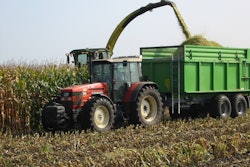In the overnight session the grains traded slightly lower with corn down 5 1/4 cents, soybean down 3/4 of a cent and wheat trading down 5 cents this morning as nearly ideal Midwest weather continues to be the focus. December corn is now only 18 cents off the lows it printed on June 15th and 16th. The U.S. dollar is trading a fraction of a percent higher and crude oil is down 43 cents. Asian markets traded higher on Wednesday with Shanghai closing up 3.44 percent.
On Tuesday the U.S. Spring wheat tour began. Scouts are touring North Dakota, the country’s largest spring wheat producer to inspect the crop development. Yields are expected to be very good this year with nearly ideal growing conditions in that region. Currently the USDA has spring wheat conditions pegged at 71 percent rated good-to-excellent across the six major wheat producing states and 84 percent good-to-excellent in North Dakota. A final yield projection is expected to be released on Thursday.
Yesterday, we saw some grain buyers in the eastern grain belt lift soybean basis sharply to help draw in any unpriced grain still stored on the farm. Sales have slowed in recent weeks as November soybean prices have slid nearly a dollar from their highs on July 14th. As prices declined, producers have become less willing to sell their soybeans triggering processors and elevators to increase soybean basis. Since July 1st we have observed spot soybean basis in Claypool Indiana increase 50 cents, providing an opportunity for producers in the area who still have grain in the bins. To see what basis opportunities may be in your area click here and take a 14 day free trial at Grain Hedge. Grain Hedge clients have access to a cash market intelligence platform that allows them to monitor basis opportunities within 200 miles of their farm.














